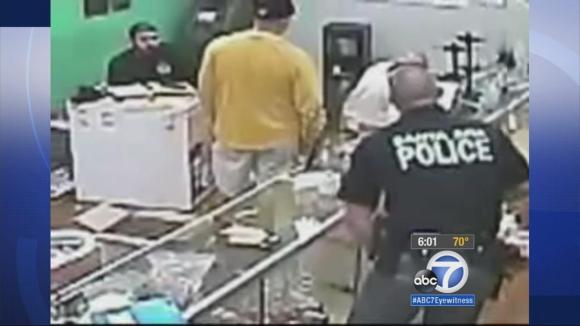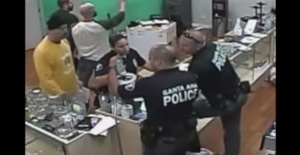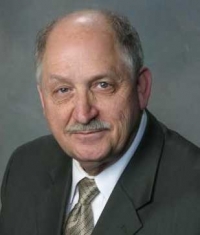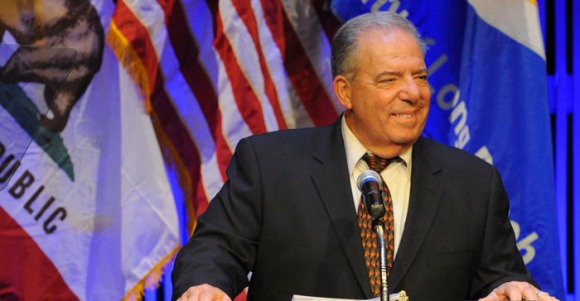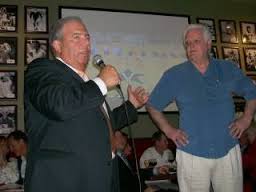In 2015, corruption, abuse and violence among US law enforcement agencies became an issue of discourse at the American dinner table, as deep reservations have spread across the public in regards to their relationship with those “sworn to protect”. Many deadly police shootings occurred with the deaths of several minors, young men and women alike totaling nearly 1,000 deaths (according to the Washington Post) and 10% of those killed were unarmed and not in the process of committing a crime but merely ran from police out of the fear of being murdered. While police shootings and violence have taken a front run in the media, medical marijuana growers and patients are no strangers to such encounters with law enforcement. The medical marijuana industry has endured the edge of the spear of police corruption for several years if not decades counting the passage of medical marijuana laws in the late 90’s and 2000’s. Despite a voter mandate and the implementation of a regulatory structure, again and again, marijuana patients and growers have found themselves subjected to the deadliest side of law enforcement abuse, with such tactics as murder, racketeering, theft, fraud, entrapment, wrongful imprisonment, illegal search and seizure, unlawful surveillance, bribery, extortion and other forms of severe abuse of power.
Why has corruption become so endemic in recent times among our police forces? The first key is the Patriot Act. The Bush Administration literally swept away anti-corruption incentives in favor of ‘anti-terror’ and ‘domestic terror’ incentives, allowing the police in many cases to sidestep the fourth amendment. Many jurisdictions and counties throughout the country took the liberty of interpreting the new rules as they saw fit, conducting their own authorizations of domestic surveillance and using the atmosphere of fear to justify expansion of budgets and more importantly, armaments.
The second key was the change in recruiting policies that took place during the Bush Administration, it began with the federal government reducing the standards for military admittance, allowing ex-felons, known hate groups and known members of gangs and organized crime to serve in the ranks during the wars in Iraq and Afghanistan. In many cases these criminals were promoted to higher rank for their willingness to perform acts of violence against civilians that other more tempered soldiers were not. Police departments petitioned the government to lower their recruiting standards as well to permit the entry of these ex-felon soldiers, many coming back with mental duress from combat, into the police forces upon their return home using veteran employment and Iraqi policing experience as a justification. These new officers were far more prone to violence, brutality, corruption and hate than their prior counterparts and many were promoted due to their views on race and domestic policing.
The third key was the continual recruitment of these personalities into law enforcement well after 2008, mainly due to the success of the Fraternal Order of Police in planting their top lobbyist, Senator Joe Biden, into the position of the Vice Presidency. The police union nationwide saw this a carte blanche opportunity to no longer ‘to protect and to serve’ but simply to rule by fear, violence and corruption. This was supported by the fact that Congress obstructed the placement of federal judges by President Obama, and many of the corrupt Bush appointees were able to continue to make rulings that protected the expansion of police misuse of power, including the acquittal of many murderers serving on the force. The ongoing corruption has led to penetration by foreign organized crime organizations, most notably the Mexican Cartels, who have used their newfound influence in law enforcement to expand their power to whole municipalities as shown by DEA research published in 2015.
DEA Corruption Report
http://www.dea.gov/docs/dir06515.pdf
So now that we know the police forces are riddled with corrupt, war-torn and psychologically unstable officers, let’s focus on their abuse of the medical marijuana industry in both current events and in retrospect:
- Yuba County Sheriff, California – NET-5 Transporting Apprehension (2015)
A recent case, near and dear to our hearts that epitomizes the corruption within policing today. This month Yuba County Sheriff’s Deputy Christopher ‘Mark’ Heath, a veteran narcotics officer of the Yuba County Sheriff’s NET-5 drug and gang task force was caught transporting 200 pounds of medical marijuana, taken from NET-5 raids, in Pennsylvania by a local anti-narcotics task force. Heath was en route to New York, where the medical marijuana could fetch a price anywhere from $6,000 to $8,000 a pound. Heath was looking at anywhere from $1 million to $1.6 million in stolen marijuana profits. Whether other NET-5 or Yuba County Sheriff’s Deputies conspired to assist Heath in transporting is still pending investigation but industry insiders know that this is most certainly the case.
NET-5 is a notoriously corrupt anti-marijuana trafficking task force that has been known to ‘tax’ marijuana transporters and local growers alike for several years now, by conducting raids and seizures in violation of California’s Medical Marijuana Law if growers fail to pay or supply them. Yuba County itself is a sparsely populated farming county with most high paying jobs coming from government work with the local air force base or the county itself. The per capita income rate is about 40% less than the California average and like many parts of California, lower income populations have turned to medical marijuana to relieve the financial stress produced by the outfall of the ongoing financial crisis. Yuba County also sponsors FACT, an anti-marijuana group in the area that documents and publicizes police raids and seizures in the county.
Links on Heath Case
Links on NET-5 Raids
http://sacramento.cbslocal.com/2013/06/04/marijuana-grow-discovered-at-gas-station-in-yuba-city/
http://www.yubacountyfact.com/?q=headlines&page=2
http://www.chicoer.com/article/ZZ/20141009/NEWS/141009424
- Santa Ana, California – Municipal Corruption (2015)
Santa Ana, a city notoriously influenced by Mexican Drug Cartels, not excluding Mayor Miguel Pulido and City Attorney Sonia Carvalho, imposed a state and federally illegal lottery in early February to issue 20 zoning and operating permits for medical marijuana collectives within the city to friends, financial associates and cartel front men associated with Pulido, Carvalho and other members of Santa Ana city council to fast-track their operations and justify the elimination of competition. The Santa Ana Police, since the issuing of these permits, have followed Long Beach’s lead by becoming the Mayor’s personal hit squad for taking out collectives that have taken suit with the city over these illegal measures, using the gang unit and anti-narcotics units to shut down anyone competing against the 20 collectives. In late May, the corruption was unveiled at the Sky High collective when Santa Ana Gang Unit utilized itself as an intimidation force to shut down the collective but was caught on camera conducting the raid, which featured several officers illegally partaking in edibles and stealing product.
The illegal lottery occurred as part of Measure BB, sponsored by the City Council, the Santa Ana police and Cartel front men; the cities success at the ballot was in large part due to the mishandling of the counter-initiative by OC NORML, who may or may not have sabotaged their own efforts due to institutional corruption and arrogance. OC NORML suspiciously opened a brand new office in the Downtown district of Santa Ana, without opposition, following the City’s victory, let alone NORML’s reputation for selling out local growers and farms for political influence and funding.
See more about the history of NORML’s Lies and Dirty Tricks:
Statements made against the city by OCWeekly Magazine and Attorney Matthew Pappas revealed that “The mayor has a pecuniary interest in [at least] one of the collectives. Prior to the election, there were limousine services and gifts provided to officials. We have evidence of that. People were approached to pay a $25,000 amount and were told they would win the lottery.”
OC Weekly continues:
“Rather than forcing lottery players to go through a lengthy background check, something that might have greatly reduced the number of applications, city officials allowed individuals to submit an unlimited number of applications per location on behalf of various corporate entities. The city’s somewhat-cynical operating theory is that corporations are people, and thus each one, no matter how fictional or freshly conceived or who actually owned it, has the right to its own lottery ball….”
“Predictably, most of the 20 winners were deep-pocketed entrepreneurs, some of whom purchased 100 or even 150 balls to increase the odds of winning. The winners included some high-profile names such as Cypress Hill’s B-Real. Many winners formed legal partnerships, raised money from investors and paid the city with money orders; the Weekly also interviewed eyewitnesses who described successful applicants who drove to City Hall in flashy cars with their girlfriends in tow, hauling shopping bags stuffed with enough cash to purchase dozens of lottery balls.
The Weekly also uncovered allegations of attempted influence peddling by Pulido’s personal attorney and former Orange County Democratic Party chairman Frank Barbaro, as well as aggressive solicitation of campaign donations by both Pulido and powerful Democratic Party operative Melahat Rafiei, whose brother is among the 20 winners. Furthermore, to raise cash for the Measure BB campaign and thus lay the groundwork for the lottery, the city worked with Randall Longwith, a prominent medical-marijuana attorney whose brother-in-law, David Dewyke, happens to manage the Clinic Patient’s Association. The large-scale dispensary operated in Santa Ana without a permit for several years, until it was finally shut down by the police in late May–one of the last such dispensaries left in the city.
Campaign-contribution records obtained by the Weekly show Dewyke was by far the largest contributor to Measure BB, writing checks totaling $57,000–single-handedly footing nearly a third of the roughly $181,000 campaign bill. (Dewyke also gave $10,000 to the Measure CC campaign.) According to limo-company operator and custom-car designer Vini Bergeman–who lives in a 20,000-square-foot mansion in Panorama Heights and is a former associate of John Gotti, as well as a former business partner of Dewyke’s–Dewyke frequently borrowed his vehicles, saying he needed them to wine and dine city officials involved in Measure BB.
The Atlantic Magazine also chimed in by pointing out the presence of corruption in the police union over the marijuana issue and the intended abuse of some of the patients present during the raid:
“On-duty police officers appear to be eating edible pot products—OC Weekly transcribes words they spoke while egging one another on. (“Those candy bars are pretty good,” one said. “I kinda feel light-headed though.”) Other dialogue offers a number of insights into the subculture of this narcotics unit. Take the woman with an amputated leg that police encountered on entering the dispensary. “Did you punch that one-legged old benita?” one police officer asks another. The other cop laughingly replied, “I was about to kick her in her fucking nub.” These are people Santa Ana taxpayers empower to use lethal force at their discretion….”
“What’s new is the way that the cops caught misbehaving on camera and the police union that represents them have responded to an internal police investigation—not with embarrassment, contrition, and public apologies, as would befit trustworthy people of good character, but with shameless, discrediting chutzpah: They’ve sued to keep now public video of their indefensible behavior from their overseers!
A lawsuit, filed last week in Orange County Superior Court by three unidentified police officers and the Santa Ana Police Officers Association, seeks to prevent Santa Ana Police Department internal-affairs investigators from using the video as they sort out what happened during the May 26 raid of Sky High Collective,” the Orange County Register reports. The article goes on to characterize the lawsuit’s claims:
The lawsuit argues that the video doesn’t paint a fair version of events. The suit also claims the video shouldn’t be used as evidence because, among other things, the police didn’t know they were on camera. “All police personnel present had a reasonable expectation that their conversations were no longer being recorded and the undercover officers, feeling that they were safe to do so, removed their masks,” says the suit.
The dispensary also did not obtain consent of any officer to record them, the suit says. “Without the illegal recordings, there would have been no internal investigation of any officer,” the suit says.
To sum up: These police officers are complaining that after rushing into this business with guns drawn, forcing employees outside, and using a crowbar to pry visible surveillance cameras off the walls, they were not warned—by the same employees they forced out—that their efforts to disable all surveillance cameras failed, rendering their decision to eat the business’s products visible to its owners. As well, they’re arguing that, though on-duty cops, they had a reasonable expectation of privacy, having failed to account for their own incompetence at disabling surveillance.
But even more galling is that last bit about how “without the illegal recordings, there would have been no internal investigation of any officer,” as that’s only true if one assumes that all cops present would cover for one another’s egregious misbehavior and sign off on a police report that misrepresented the raid. That isn’t a bad assumption, given that police subculture is rife with cops who fail to report on the misconduct of fellow police officers, but it’s really something to see police officers invoke that reality, even implicitly, in an attempt to wriggle out of accountability.
And most galling of all is the fact that this tactic is going to work temporarily. “A Superior Court judge indicated Tuesday that he plans to issue a temporary restraining order that would prevent the Santa Ana Police Department from using video of officers misbehaving during a pot-shop raid as the department investigates the officers’ actions,” the Voice of OC reports. “According to court documents, Judge Ronald Bauer so far agrees with officers’ claims that they would suffer ‘irreparable harm’ if the department is allowed to use video that the Santa Ana Police Association argues was obtained in an illegal eavesdropping operation.”
Santa Ana Police even went as far as to quash the video for their own internal affairs investigation. Maybe it’s the City of Santa Ana, not the medical marijuana community, that deserves to have an investigation of its own and not just a local one, but a federal one.
http://www.ocweekly.com/news/exactly-who-won-santa-anas-medical-marijuana-lottery-6479501
- Sullivan City, Texas – Top Narc Caught Taking Marijuana From Raid (2015)
Police officers conducting a raid against a marijuana grow site removed marijuana from the scene with permission from the police chief. Unbeknownst to these investigators, the grow has cameras on-site and filmed one officer removing marijuana in bottles of rubbing alcohol. The Department had already been under suspicion of marijuana trafficking for the cartel and a good cop, upon review of the footage, elected to turn in the corrupt cops to the Texas Rangers authority. The police department attempted to cover up the misappropriation leading to a raid by Texas Rangers against the Sullivan City Police Department. The local Valley News tells us more:
“Officer Angel De La Mora grabbed a handful and stuffed the marijuana inside a bottle of rubbing alcohol. “It was a stupid, dumb mistake,” de la Mora said months later during an interview. “But there’s more to it.” Police Chief Miguel Martinez stood by the door, watching de la Mora take handful after handful of marijuana. Police Inv. Reynaldo Cortes also stood nearby, occasionally chatting with the chief. They weren’t concerned about two security cameras that recorded the incident on May 21. If a police sergeant hadn’t tipped off the Texas Rangers, nobody would have missed the marijuana.
“For me, it was more of a Barney Fife deal,” said attorney Ricardo Salinas, who represents de la Mora — referencing the dimwitted but well-meaning deputy from “The Andy Griffith Show.”
“I don’t believe that him or the chief really meant to do anything wrong,” Salinas said. “Ignorance of the law is no excuse, but I don’t think it’s really worth pursuing.”
The Texas Rangers apparently didn’t agree.Nearly three weeks later, the Rangers raided the Sullivan City Police Department and seized the surveillance footage.They also presented Sullivan City with a search warrant that placed the police department on notice: The Rangers believed the incident may have constituted theft by a public servant, a state jail felony, and abuse of official capacity, a Class A misdemeanor. While the raid surprised Sullivan City administrators, problems with the police department aren’t anything new. The troubled police department went through five police chiefs during the past five years. In June 2010, federal agents arrested Chief Hernan Guerra Jr., who pleaded guilty to drug trafficking. Frustrated with city politics, Interim Chief Carlos Lucio left just 14 months later. The City Commission fired Chief Jose Anaya for unprofessional conduct. And Chief Juan Alejandro resigned after Sullivan City administrators asked him to stop sleeping at the department. That left Sullivan City with veteran patrolman Miguel Martinez, who got the top job primarily because the City Commission knew he would stick around.
Constant turnover allowed de la Mora and other officers with questionable records to avoid scrutiny for years. “To me, it wasn’t a police department per se,” said Joe Cantu, a semi-retired Rio Grande Valley lawman who spent a year working for Sullivan City. “It was just a bunch of guys who carry guns and badges and aren’t properly trained.”
Several local officers, including former police Chief Hernan Guerra Jr., have been caught working with smugglers. In June 2010, federal agents arrested Guerra for working with a Tamaulipas-based drug trafficking organization. Guerra helped the organization dodge Border Patrol agents and kept Sullivan City police away from drug shipments. He also rigged city vehicle auctions for drug traffickers. In exchange, the smugglers paid him $500 to $2,000 every month, according to federal court records. He pleaded guilty and received a 10-year prison sentence. “You seemed to scoff, really, at getting caught,” said U.S. District Judge Randy Crane, according to a transcript of the April 2011 sentencing hearing. “You didn’t care. You were going to do it anyway. I remember being appalled listening to some of the things you were saying on wiretaps.”
“Former Sullivan City police Officer Juan Sotelo said he witnessed de la Mora’s dark side on March 10, 2012. While working off-duty security at Jaguars — an Edinburg strip club with nude dancers — Sotelo said he spotted de la Mora. “Officer Sotelo stated that Officer de la Mora was heavily intoxicated and appeared to be under the influence of an illegal substance, due to the fact that he observed a white substance on his nose,” according to records from an internal investigation conducted by the Sullivan City Police Department. Sotelo later filed a lawsuit against Sullivan City, claiming the department retaliated against him for reporting wrongdoing.
His attorney, Javier Pea, provided the confidential internal investigation to KGBT-TV, which independently verified the document’s authenticity. The police sergeant who investigated the incident confirmed Sotelo’s story by contacting another officer who worked off-duty security at Jaguars that night, according to the report. Afterward, the sergeant bought an off-the-shelf drug test from Walgreens and asked de la Mora to submit a urine sample. De la Mora tested positive for cocaine, according to the internal investigation. He resigned effective immediately. However, the Walgreens drug test wouldn’t stand up to legal scrutiny. Sullivan City had botched the investigation.”
Fewer than two months later, de la Mora reapplied to the Sullivan City Police Department. He submitted the standard 13-page job application, which asked: Have you ever used marijuana or any other drug not prescribed by your physician? “Yes,” wrote de la Mora, according to a copy of the application obtained through a public information request. “Cocaine. The situation was an ordeal.” Sullivan City hired him back anyway. Nearly all drug trafficking and immigrant smuggling cases involve cars, Lucio said, adding that the department would file civil forfeiture proceedings against the vehicles. Money from the vehicle auctions funded equipment and other police department expenditures. “Sullivan City can’t support itself on the citations,” Lucio said, referencing traffic tickets. “It can’t. The money is in forfeitures.” For the cash-strapped city, forfeiture funds have become so important the police chief talks with the City Commission about seized vehicles at monthly meetings. “That’s why they wouldn’t let him go: Because the police department is a business,” Lucio said. “And anyone who says otherwise is lying.”
De La Mora went on to claim he was stealing the marijuana for a relative, for medical use but given his track record of corruption, nobody took the bait.
The Drug Policy Alliance made a general comment on asset forfeitures and police corruption stating:
“Ever wonder why police spend so much time enforcing failed drug laws? To find the answer, you just need to follow the money. Funding schemes and asset forfeiture laws have given law enforcement agencies strong financial incentives to continue the drug war. Because funding for drug task forces is often based on the number of arrests made and the amount of property seized in drug busts, the easiest way for local police to up their numbers and boost their careers is to target low-level drug offenders, not violent kingpins. To create arrest opportunities, police routinely rely on untrustworthy informants, conduct dangerous home invasions on flimsy evidence, frame suspects and commit perjury. Asset forfeiture laws allow law enforcement agencies to seize property with minimal proof, putting the burden instead on suspects to prove their own innocence. Because these assets often go straight into the coffers of the enforcement agency, these laws have created financial incentives for property seizures that encourage corruption.”
- Phoenix, Arizona – Police & Courts Entrap Medical Grower (2015)
Kyle Catlin, a medical marijuana grower, patient caregiver and medical marijuana activist in the state of Arizona is currently facing trial along with his brother for two cases in Tucson for growing marijuana for sick, elderly and disabled patients. Catlin’s arrest was due to a personal vendetta by local law enforcement authorities, against Catlin’s father a seasoned marijuana veteran who managed to evade arrest and incarceration for several years. The local authorities were so vengeful in going after Catlin that the judge in his trial refused to allow Catlin’s lawyer to reference the state marijuana law. Since Catlin is a state licensed caregiver the marijuana law would have protected his civil rights but the corrupt judge refused to allow the law to be brought into court stating that in Arizona the marijuana law was not an affirmative defense.
According to Tucson Weekly:
“In April 2012, Catlin was pulled over by Tucson Police officers, allegedly for speeding. What really happened, according to Catlin, is a young man had gotten in trouble earlier over having some weed, and he told the cops he had gotten it from Catlin. The police officers interrogated Catlin, and he ended up showing them the two ounces of weed he carried in his backpack (law says you can carry up to 2.5 ounces), and his medical marijuana card. “At some point I asked ‘Am I under arrest?'” he says. “I heard a police officer lie and say that I had said that there were more (marijuana) jars at my house, when I was never asked anything about marijuana at my house,” he says. The cops searched his pockets and found two cell phones and cash, which they saw as sufficient probable cause to search his home.
They found 147 marijuana plants, weed in jars and a gun in Catlin’s safe. Overnight, he was charged with four felonies: possession of weed for sale, attempt production, possession of drug paraphernalia and possession of a deadly weapon during the “commission of a drug offense.” According to the indictment document, law enforcement found more than two pounds, but less than four pounds of weed for each cultivation, production and possession, roughly adding up to 15 years if given the maximum sentence. Marijuana paraphernalia would be at least four months but no more than two years. A grand total of close to 20 years in prison if given the max, according to the marijuana advocacy group NORML.”
“A few months into pre-trial for case one, Catlin’s home was searched again. The investigators overseeing the case found recent information about his healing center— Arizona Medical Marijuana Caregivers—online, and that’s how they justified another search warrant. “They destroyed my house, ripping posters down, and breaking glass water pipes all over the house,” he says. Catlin was pinned with 10 felonies. Among them, “illegally conducting an enterprise that sold and/or possessed for sale amounts of marijuana and cannabis … to customers,” the indictment says. It lists Catlin as the boss, who employed an “associate” to deliver marijuana, and “arranged appointments between the runner and customer for the purpose of selling marijuana.” There was also another charge for possession of marijuana for sale, possession of drug paraphernalia, and conspiracy to possess and sell. “Here I am trying to prove that what I am doing is legal, and I’m getting in trouble. I’m not doing anything illegal, but it appears to (the judge) that I am,” he says. The trial for case one begins on Oct. 13. If he’s found guilty of all or any charge, he’ll face trial two with previous convictions.”
Kyle’s problems are an extension of the municipal and statewide corruption by law enforcement and judicial authorities. Just a little dig into the local marijuana community and we were able to uncover that many Arizona state officials and the local elite have ownership stake in the largest medical marijuana dispensaries in the state and that such persons include famous public figures like Sheriff Joe Arapaio, JP Holyoak of the hedge fund Holyoak Wealth Management, and most notoriously the so called “anti-corruption figure” Representative Ted Downing of Tucson and his relatives. Downing has been perceived as the invisible hand behind Catlin’s trouble in court as Catlin was a direct competitor to Downing’s associated dispensaries in Tucson, Sedona and Cottonwood; he has only admitted to ownership stake in the Sedona dispensary and in a production facility in Cottonwood. Suspicion of Downing has been present ever since the indictment of Downing’s sons for diversion of campaign funds for personal use in 1997 and again in 2011, shattering his anti-corruption image and putting him on the list of corrupt public officials that misuse their political power for personal gain.
Other advocates have attempted to speak out against the misuse of authority. The Phoenix New Times primarily blames the regime of Governor Jan Brewer and a rogue AZ DEA in a 2012 article for the stunted growth of AZ’s industry:
“The state of medical marijuana in Arizona is messed up. Governor Jan Brewer partly is responsible for that. After a thin majority of voters passed Proposition 203 in 2010, Brewer canceled the dispensary portion of the program, claiming that state workers would be prosecuted for administering it. A federal lawsuit she filed in May 2011 was an obvious attempt by the Republican marijuana foe to get the law declared unconstitutional. It failed. Maricopa County Superior Court Judge Richard Gama, in examining a lawsuit by would-be dispensary owners, ordered Brewer to implement the program as voters intended.”
“A few Valley clubs and/or collectives have been raided by police and shut down. But more keep popping up. At least one, the Arizona Cannabis Society in El Mirage, re-opened after a raid. Prosecutions have been fewer. After the federal Drug Enforcement Agency raided Tempe’s Arizona Go Green Co-op, state Attorney General Tom Horne’s office dropped charges against the owner, James Chaney, and an employee. Bill Hayes, one of the founders of the Arizona Cannabis Society, is yet to be charged after his outfit was busted by Phoenix police in May. And Garry Ferguson, whose Tempe club had the distinction last year of being the first such business to be raided, never was charged.
County Attorney Bill Montgomery, an ambitious conservative who wants the medical-marijuana law canceled by the feds, voters be damned, is moving forward with prosecutions of employees of two cannabis clubs… Montgomery is trying to force the issue, possibly in conjunction with police and the state Attorney General’s Office. Fact is, the question about the legality of the clubs still is to be determined in Arizona, as authorities well know.”
“Despite the threats of prohibitionists, the names of 97 companies and groups that will be authorized to sell marijuana in Arizona were pulled from a lottery-style air-blower by the state Department of Health Services on August 7. The lucky applicants were culled from a total of 426 who each paid $5,000 for the opportunity to be in the running. The losers get $1,000 back.”
Sound familiar?
Links:
http://verdenews.com/main.asp?SectionID=1&ArticleID=54182
http://verdenews.com/main.asp?SectionID=1&SubSectionID=1&ArticleID=58407
http://m.eastvalleytribune.com/news/article_bf812142-4ccb-5d62-a835-f9ccf617e36d.html?mode=jqm
http://wc.arizona.edu/papers/91/7/01_2_m.html
http://www.phoenixnewtimes.com/news/allan-sobol-arizonas-medical-pot-martyr-6455298
- Long Beach, California – A Nationwide Model For Police Corruption (2008 to Current)
Ah yes, Long Beach; the birthplace of the medical marijuana industries problems.
The City of Long Beach was the first city in the United States to racketeer medical marijuana dispensaries under the architecture of former Mayor Bob Foster, Police Chief Jim McDonnell (now LA County Sheriff), City Attorney (and Irish Mob affiliate) Bob Shannon, La County Supervisor Don Knabe, Attorney Matt Knabe, Business Relations Manager Erik Sund (known KKK affiliate) and the Long Beach Police Officer Association led by Narcotics Detective and underworld killer, Det. David Strohman. Long Beach was formerly the jewel of the medical marijuana industry and the top pioneer in dispensary operation, but this all came to a grinding halt when city insiders became deeply threatened by the level of competition that their own dispensaries faced.
Mayor Foster, City Attorney Shannon and local OC crime boss John Morris along with local grower Carl Kemp, shared interests in several of the local dispensaries in Long Beach that were not performing well due to the subpar quality of their indoor marijuana. Morris, the notorious owner of Long Beach’s Legends bar in Belmont Shore, peddled his influence to several members of the Long Beach City Council in order to push for an illegal lottery that would determine who would be allowed to stay and who would be forced to go.
*Courtesy of OCWeekly Marijuana Super Investigator Nick Schou:
“His pitch to City Hall: work with someone you know, rather than open the door to strangers from out of town who might turn out to be shady characters. “How are we going to make this truly work in Long Beach so it’s not gangbangers doing it?” Morris figured. “Let’s bring the community into this thing so everyone knows who we are.” Since marijuana collectives aren’t allowed to make a profit in California, Morris says, he planned to open at least four different storefronts throughout the city, each affiliated with a nearby charity, including Long Beach Memorial Foundation; the city’s skate-park program, run by ex-councilman Mike Donelon; and Long Beach Gay and Lesbian Center, whose director, Ron Sylvester, recalls talking to Morris and being excited about the concept. I brought it to our board of directors and got back to John and told him that we’d love to be a beneficiary,” Sylvester says. “I kept an eye on what was happening legislatively, and, of course, we’re disappointed that it hasn’t come to fruition. When he met with city attorney Shannon about the project, Morris brought his lobbyist, Matt Knabe, whose father, Don Knabe, sits on the Los Angeles County Board of Supervisors.”
“To create a nonprofit called the Fourth Street Collective at 1069 Wardlow St., Morris reached out to Christine Donelon, wife of the former city councilman who ran the skate-park charity Morris hoped to fund. Another was tax accountant Osvaldo Lainez, who handled returns for both Morris and Dee Andrews, a Long Beach councilman. Lainez is also the president of the nonprofit Chicar, which has won tens of thousands of dollars in Port of Long Beach donations, ostensibly for helping to organize the city’s annual Martin Luther King Jr. Day parade, which is steered by Andrews.”
In late 2010, City Attorney Shannon held a rigged lottery in City Council that essentially forced the dispensary owners to bribe the city into retaining their operating permits, in addition requiring a $15,000 application fee. The lottery was immediately legally challenged thwarting the Morris Syndicate’s plans to fix competition as widespread corruption was alleged by other dispensary owners. In retaliation, Morris’s associate Mayor Bob Foster ordered David Strohman of the Long Beach POA to form a special anti-marijuana task force that would begin to raid, shake down and intimidate the dispensaries that dared to defy the illegal lottery.
“Larry Parks, who owned the 1 A.M. collective, [2] first became suspicious about the city’s program weeks earlier, when he paid a $2,000 consulting fee to Morris’ attorney, Violas.
“I wanted to get his thoughts about the lottery process and what he thought my chances were,” Parks recalls. “He wanted me to hire him for $2,000 a month and told me his clients don’t get bothered by the city. He called it ‘good lawyering’ and said he’d need $5,000 here and $5,000 there to spread around.” Violas claimed to be “good friends” with Erik Sund, Long Beach’s business-relations manager and director of the city’s medical-marijuana program. “Mr. Violas told me that if I paid him money, he would be able to guarantee acceptance of my patient-cooperative group’s application for a Long Beach city permit,” Parks later stated in a sworn deposition. “When I asked him how he could do this, he told me . . . my group might have to make monetary contributions to city projects or to city officials.”
“Mike Genera refused to pay the fee to enter the lottery; soon after, the city began sending code-enforcement officers to his collective, threatening his landlord, and issuing him up to $50,000 in fines over a period of several months. The police also showed up and filed misdemeanor charges—violating the city’s marijuana ordinance—against his security guard and manager. “They used every kind of tactic that you can imagine,” Genara says. “It was just so overwhelming.”
Dallas Alexander, who operates the Dank City Collective, also paid only a token fee of $500 to the city, instead of the $15,000. “I was summarily rejected,” he says. Not long thereafter, the police raided his shop while he was on his way to work. “They broke down my door with no warrant,” he says. “They basically robbed me. They took whatever they could in money. I saw Erik Sund walk out with a bag of my merchandise. They arrested three of my people who were working, but they were out in a couple of hours.”
Until she voluntarily closed the dispensary late last year, Katherine Aldrich operated 562 Collective in the north Long Beach neighborhood of Bixby Knolls. She also refused to pay the city’s permit fee and didn’t participate in the lottery. On Feb. 14, 2011, the police raided her collective while she was taking her daughter to the orthodontist. Security footage filmed during the raid shows plainclothes officers accompanied by Sund standing in her lobby. No arrests were made, but Aldrich received a fine. The cops returned again three months later, again without a warrant. When her employees refused to open the safe, police arrested them but left empty-handed. Sund was present for that raid, too.”
Eleven dispensaries immediately found themselves getting served with official city letters demanding $40,000 a month in payments to the City Attorney’s office or face a ‘federal raid’ citing a power to deputize LBPD officers as federal narcotics agents. Strohman and his corrupt POA conspirators began a system of identifying, surveilling, capturing and in some cases assassinating members of the Long Beach and San Pedro marijuana industries including growers, transporters, and dispensary workers alike.
The city’s counterattack came to a grinding halt when they caught the attention of the FBI following the shooting and killing of a corrupt federal law enforcement official, who attempted to kill internal affairs investigators at the Downtown Long Beach Federal Building. According to the LA Times: “ The ICE agent, whose name has not been made public, shot and killed Ezequiel Garcia in February 2012 after Garcia opened fire during a meeting about his job performance. He fired at least six shots at his boss before he was shot dead. Kevin Kozak, the Los Angeles field offices second in command, was severely injured. The shooting left the seventh-floor office in Long Beach riddled with bullets.” This incident sparked a yearlong investigation that disturbed city officials, fearing that their RICO violations of the Long Beach marijuana collectives would be uncovered due to the attention being garnered by the lottery lawsuits. Foster and Shannon’s immediate reaction was to pass a citywide ban on medical marijuana collectives and they entrusted Chief McDonnell and Detective Strohman with carrying out the elimination of over a hundred collectives that operated throughout the city targeting both the collectives, their suppliers and even resorting to intimidating and harming their patients.
“According to the lawsuit, one of the officers, Dave Strohman led a team of cops who raided the NatureCann collective on March 21, 2012, using a battering ram to knock down the door. “The police officers entered guns drawn and ordered everyone on the ground,” the lawsuit states. “They immediately arrested everyone (four volunteers) for violating LBMC Chapter 5.89,” the city’s ordinance banning marijuana clubs. The lawsuit adds that Strohman and his team “interrogated those arrested,” then seized “all medical marijuana, cash registers, computers and patients records” and that the club was “utterly destroyed.” Elsewhere, the suit claims Strohman routinely failed to provide exculpatory evidence, such as information showing that the clubs were legal under state law, when filing search warrant affidavits. Another cop mentioned in the lawsuit is Oscar Valenzuela, a detective whose prior claim to fame is star witness for the prosecution against Joe Byron and Joe Grumbine, both of whom have the distinction of being the only Long Beach pot purveyors who were prosecuted for doing the same thing that city-permitted clubs were going, i.e. selling pot. (The two men were convicted, but have won the right to a new trial thanks to judicial misconduct).”
Further Reading on LBPD Police Corruption by advocate Chief Stephen Downing:
http://www.longbeachcomber.com/story.aspx?artID=5241
The dispensaries connected to the city were allowed to remain open for a longer duration in order to recover losses and assume profits before the ban became permanently in effect in late 2013. Since that time, Long Beach held city elections in 2014 that were heavily monitored by the marijuana community for anti-corruption. Most notorious was the highly illegitimate election of City Attorney Charlie Parkin, a relative of RICO co-conspirator Bob Shannon, who has continued to hamper efforts to restore medical marijuana within the city.
Despite attempts by Councilmen Lena Gonzalez, Suja Lowenthal, Rex Richardson and Mayor Robert Garcia to restore the cities medical marijuana business program they have faced staunch opposition led by former prosecutor, anti-marijuana advocate and racist blue blood Susan Price, representing the wealthy 3rd District; 8th District Councilman Al Austin, who was miraculously elected despite his very public displays of illiteracy at council meetings; 5th District Councilwomen Stacy Mungo, a queen bee follower who was subject to attack ads by Americans For Safe Access during the election and retains a bitter resentment towards the industry and Councilman Dee Andrews of the 7th District who is still trying to cover up his involvement in Mayor Foster’s extortion racket. City Council must have a 6 member majority to pass the marijuana law and the final decision may lie in the hands of new Councilman Daryl Supernaw although it appears he has been negatively influenced by the Suzie Price Clique. There is no doubt that Ms. Price intends to sabotage the medical marijuana program to undermine Mayor Garcia, as it is known that she has made statements in private regarding her desire to become the Mayor of Long Beach. Mrs. Price’s prejudices against marijuana and marijuana patients comes from her deep entrenchment as a prosecutor and her racist attitudes towards the black and Latino communities within Long Beach.
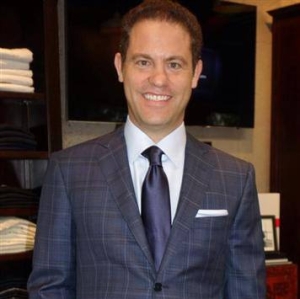
Aaron Herzberg, Marijuana Racketeer in Santa Ana and Long Beach
The opposition to Mayor Garcia’s initiative by Price forced the creation of a highly corrupted city commission, of whose members are dually involved in Mayor Pulido’s racketeering of Santa Ana dispensaries. They seek to reinstate the city insider dispensaries while taking away grow rights from individual patients within city limits. Despite a voter mandate authorizing the restoration of the city’s medical marijuana ordinance, Ms. Price used council procedure to force the commission and stall implementation in order to maintain the ban. Meanwhile, Officer Strohman has successfully eliminated marijuana competition within the delivery serves, and most deliveries now operating within Long Beach city limits are owned by members of LBPD or their children.
Links:
http://www.dailybreeze.com/article/ZZ/20100920/NEWS/100928606
http://www.ocweekly.com/news/long-beach-offers-collective-punishment-6424622
http://articles.latimes.com/2013/mar/16/local/la-me-ice-shooting-20130316
The ‘Long Beach Model’ of corruption has been exported to municipalities and law enforcement agencies throughout Medical Marijuana states and this has been seen with the subversion of marijuana law by county and city authorities throughout California, Oregon, Washington, Arizona, Colorado and possibly many more states to come.
Will 2016 be the year when the marijuana industry says enough is enough?
- The Green Chazzan
